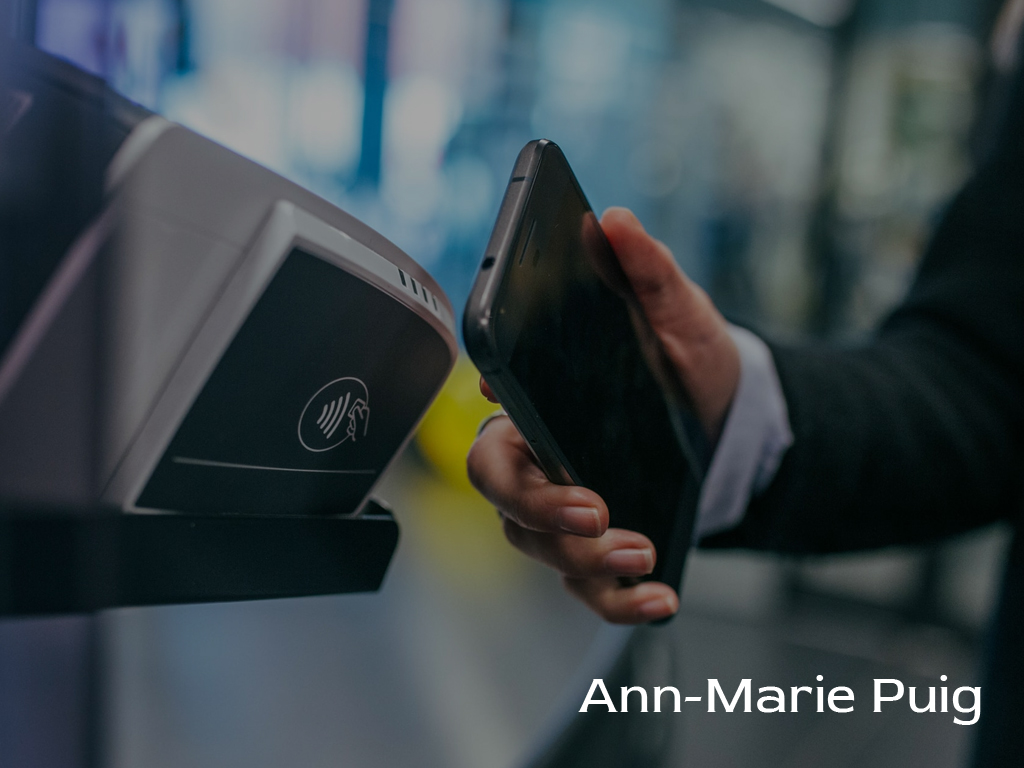Contactless payments, with which it is only necessary to bring the card or mobile device to the reader to pay for the purchase for a few seconds, are growing exponentially worldwide year after year, and the countries of the Latin American region are beginning to join this unstoppable trend. Ann Marie Puig, a lifelong entrepreneur and philanthropist from Costa Rica, explains how contactless options continue to gain popularity in Latin America.
The accelerated penetration of contactless payment options has a very concrete explanation. In a world where convenience and effective use of time is everything, where more consumers choose to pay digitally instead of using cash, it is the simplest, fastest and safest way to make a transaction, which improves the shopping experience. Hence, tap-and-go payments are transforming the daily lives of millions of people and sectors around the world.
Contactless cards are the same as a credit or debit card; the difference is that they come with a built-in chip that allows the transaction to be completed, seven times faster than with traditional methods. Most contactless payments do not require a PIN or signature on low-value purchases, although this depends on local regulations.
Digital wallets work similarly to contactless cards. The difference is that these require the smartphone to contain a pair of chips: one that stores and encrypts the card information, and another that is nearby to transmit the encrypted card information to complete the transaction.
Explains Puig, “Although this technology dates back to 2005, it is in these last three years that its adoption and use has accelerated worldwide. In fact, in 2017, it had been launched in several new markets, while its implementation has been expanding in existing markets where digital wallets are accelerating their adoption.”
Contactless payments are currently active in more than nine million merchants in 114 countries around the world. Globally, one in five purchases with a card is made with this system, and it is estimated that until 2022, the contactless payment market will have an annual growth of 24%. Today, only 1% of contactless payments come from mobile digital wallets, but adoption is growing worldwide.
Europe and Asia Pacific are the two regions driving most of this growth. In Europe, more than 40% of face-to-face transactions are now made contactless, while in Asia Pacific, that percentage exceeds 50%.
In many countries the presence is preponderant. In Australia, more than 90% of transactions are contactless, while in the Czech Republic, Poland, Hungary, Georgia and Slovakia, three out of four transactions are contactless. Major markets, such as the UK, the Netherlands, Spain, Singapore, New Zealand and Canada, are seeing increasingly widespread use and are expected to be higher in the coming years.
In Latin America, contactless transactions are beginning to loom and gain ground in some countries. “In the transport systems of Colombia, Chile, Mexico and Brazil,” adds Puig, “you can already pay without contact. Costa Rica leads the trend, since the government, in 2018, implemented an initiative to see 100% of the cards carry this technology, understanding the convenience involved in replacing cash, while growing readers enabled throughout the country.”
Contactless payments have penetrated strongly in specific sectors, such as small businesses and transport, where transactions are low cost and cash was the predominant means of payment. Kiosks, gas stations, convenience stores, fast-food restaurants, supermarkets and pharmacies have shown greater growth due to the introduction of contactless payments, as it is proven that contactless transactions promote greater purchases in the consumer, and therefore more profit for the merchant.
In more than 80 cities around the world, it is no longer necessary to buy tickets to pay for the train, metro or bus. Now, just by bringing the contactless card or mobile phone, it works as a ticket. Contactless cards make getting around simpler and faster. London introduced this system in the transport network in 2014 and, today, over 40% of trips are paid for that way. Nonprofits and brands are also adopting it to simplify donation processes.
Projections about the expansion of contactless payments are stark. With more countries and merchants adding to this trend, it is a fact that we are moving towards a world with contactless transactions. Faced with this horizon, all of Mastercard’s new cards issued in various regions, including Latin America, have this technology incorporated.




